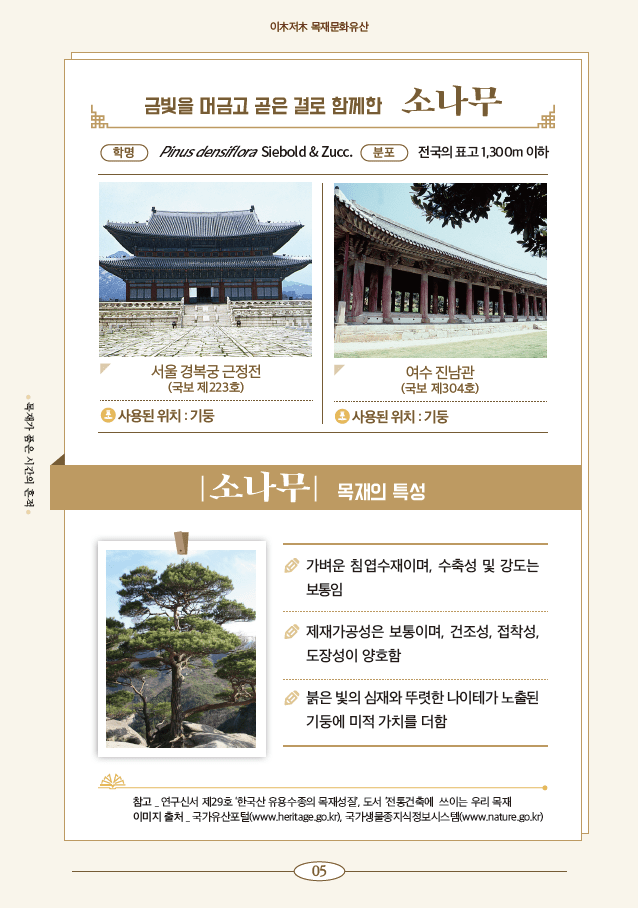The Korea Forest Research Institute (KFRI) under the Korea Forest Service announced on the 17th that it has published a publication titled ‘This and That Wood Cultural Heritage,’ which scientifically analyzes the hidden value of wood contained in our cultural heritage.
This publication highlights the new significance of wood cultural heritage by scientifically interpreting the physical characteristics and functions of wood used in various cultural properties, including traditional buildings such as palaces and temples, as well as household wooden furniture, musical instruments, and crafts, especially focusing on their carbon storage functions.
For example, it was found that the straight-grained pine was used in the columns of Gyeongbokgung Palace and Jinamgwan Pavilion, while the strong zelkova was used in the columns of Muryangsujeon Hall at Buseoksa Temple. The use of paulownia in geomungo is analyzed to be due to its excellent resonance resulting from its large cell lumina and high porosity. The research team provided scientific grounds for the wood selection and utilization by ancestors through these cases.
This publication particularly presents numerically that wood cultural heritage not only has historical value but also serves as an environmental role as a carbon storage utility in response to climate change. An analysis of the pine wood volume, approximately 503.03 cubic meters, used in the restoration of National Treasure No. 1 Sungnyemun, found that it has the effect of storing about 415 tons of carbon dioxide. The KFRI explained that wood cultural heritage serves as a ‘living carbon storage’ that stores carbon until the lifespan of the structure ends, showing the importance of sustainable wood use.
The research team, through this publication, scientifically presents the environmental and cultural value of wood cultural heritage from a modern perspective, highlighting the potential of wood as a sustainable resource that can be utilized by future generations. The publication is available for free viewing on the website of the KFRI library.
Yang Ji-yun, a researcher at the Wood Industry Research Department of the KFRI, said, “Wood cultural heritage is a scientific record that encapsulates the lives and technologies of our ancestors and serves as a sustainable knowledge resource for future generations,” and added, “With this publication, we aim to widely promote the cultural value of wood and scientific application systems.”
